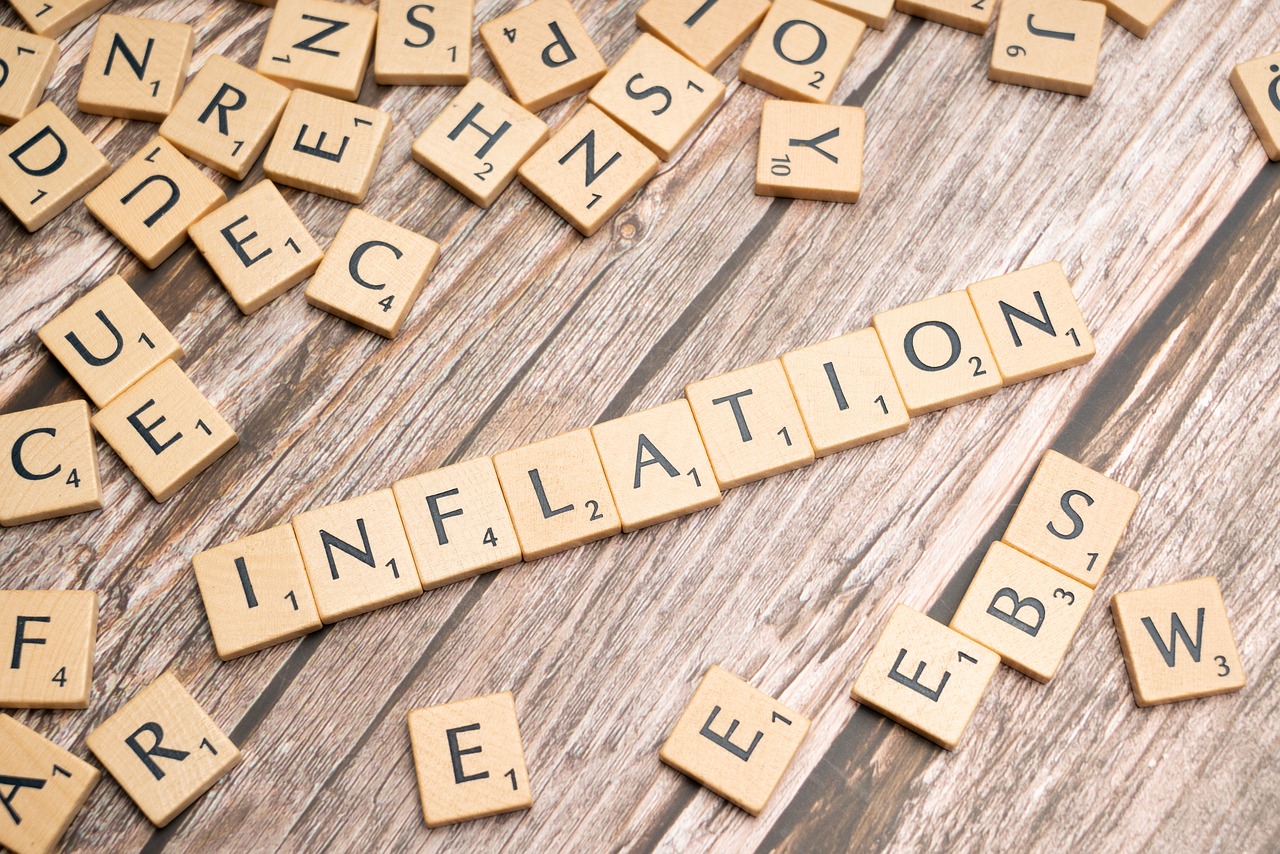Inflation Rearing Its Ugly Head
by Alasdair Macleod, GoldMoney:
 The world of finance and investment, as always, faces many uncertainties. The US economy is booming, say some, and others warn that money supply growth has slowed, raising fears of impending deflation. We fret about the banks, with a well-known systemically-important European name in difficulties. We worry about the disintegration of the Eurozone, with record imbalances and a significant member, Italy, digging in its heels. China’s stock market, we are told, is now officially in bear market territory. Will others follow? But there is one thing that’s so far been widely ignored and that’s inflation.
The world of finance and investment, as always, faces many uncertainties. The US economy is booming, say some, and others warn that money supply growth has slowed, raising fears of impending deflation. We fret about the banks, with a well-known systemically-important European name in difficulties. We worry about the disintegration of the Eurozone, with record imbalances and a significant member, Italy, digging in its heels. China’s stock market, we are told, is now officially in bear market territory. Will others follow? But there is one thing that’s so far been widely ignored and that’s inflation.
More correctly, it is the officially recorded rate of increase in prices that’s been ignored. Inflation proper has already occurred through the expansion of the quantity of money and credit following the Lehman crisis ten years ago. The rate of expansion of money and credit has now slowed and that is what now causes concern to the monetarists. But it is what happens to prices that should concern us, because an increase in price inflation violates the stated targets of the Fed. An increase in the general level of prices is confirmation that the purchasing power of a currency is sliding.
According to the official inflation rate, the US’s CPI-U, it is already running significantly above target at 2.8% as of May. Oil prices are rising. Brent (which my colleague Stefan Wieler tells me sets gasoline and diesel prices) is now nearly $80 a barrel. That has risen 62% since last June. If the US economy continues to grow the Fed will have to put up interest rates to slow things down. If it doesn’t, as money-supply followers fear, the Fed may still be forced to put up interest rates to contain price inflation.
It is too simplistic to argue that a slowing of money supply growth removes the inflation threat. In this article, I explain why, and postulate that the next credit crisis will be the beginning of the end for unbacked fiat currencies.
The fictions behind price inflation
The CPI-U statistic is an attempt to measure changes in the general price level, defined as the price of a basket of goods and services purchased by urban consumers. The concept is flawed from the outset, because it is trying to measure the unmeasurable. Its mythical Mr or Mrs Average doesn’t exist. Not only is the general price level different for each individual and household, but you cannot ignore different classes, professions, locations, cultural and personal preferences, and assume they can be averaged into something meaningful. We can talk vaguely about the general level of prices, but that does not mean it can or should be measured. Averaging is simply an inappropriate construction abused by mathematical economists.
There is also a fundamental and important dynamic issue, ignored by economic statisticians. You cannot capture economic progress with statistics, let alone averages. The ever-present change in the human condition is the result of an unquantifiable interaction between consumers and producers. What a consumer bought several months ago, which is the basis for statistical information, can be no more than an historical curiosity. It does not tell us what he or she is buying today or will buy tomorrow. Nor can the statisticians possibly make the value judgements that lead consumers to switch brands or buy different things altogether. In short, even if there was a theoretically justifiable price index, it measures the wrong thing.
The statisticians are simply peddling a myth, which leaves it wide open to abuse. The myth-makers, so long as the myths are believed, control the narrative. It is in the interests of the statisticians’ paymasters, the state, to see price inflation under-recorded, so it should be no surprise that independent attempts to record price inflation put it far higher.
Independent estimates suggest that a price inflation rate of around 10%, depending on the urban location, is a more truthful assessment.[i] If this was officially admitted, the continuing impoverishment of the ordinary American would be exposed, because the GDP deflator would be large enough to record an economy continually contracting in real terms. And this appears to have been the situation since the Lehman crisis, as well as in many of the years preceding it.
You cannot, year in year out, take wealth away from consumers without crippling the economy. A continual economic contraction, which is the inevitable result of monetary debasement. It can never be officially admitted, least of all by the Fed, which has total responsibility for the currency and the banking system. The Fed does not produce official price inflation estimates, which is the responsibility of the Bureau of Economic Affairs, so the Fed conveniently hides behind another government department.
But if the Fed did admit to this statistical cover-up, what could it do? The whole concept of monetary stimulation would quickly unravel, and the debate would almost certainly move away from policies that rely on monetary smoke and mirrors towards the reintroduction of sound money. The Fed would be out of a job.
However, the government now depends on inflationary financing to cover persistent budget deficits, if not directly, then indirectly through the expansion of bank credit to finance the acquisition of government bonds. In the short term, President Trump has made things worse by raising the budget deficit even further, which will be financed through more monetary inflation. And in the long term the obligations of increasing welfare costs will ensure accelerating monetary inflation ad infinitum is required to pay the government’s excess spending.
So, we can say with confidence that the purpose of monetary policy has quietly changed from what is commonly stated, that is to foster the health of the US economy. Instead it is to ensure government spending can proceed without interruption and without asking the people’s representatives permission to raise taxes.
Supply-side and time factors
The conventional neo-Keynesian view of price inflation is that rising prices are driven by excess demand. In other words, an economy that grows too fast leads to increasing demand for the factors of production.
This approach wrongly plays down the role of money. If the quantity of money is fixed, the increased demand for some factors of production can only be met by reduced demand for other factors of production. If the quantity of money and credit is increased the redistribution of factors of production is impaired, and common factors are bid up to the extent the extra money is available. The source of higher prices is clearly the extra money.
When a central bank, like the Fed, creates money and encourages the expansion of credit, it takes time for this extra money to work through the system. It is deployed initially in the financial, as opposed to the productive side of the economy. This is because monetary inflation is initially directed at the banks to stabilise their balance sheets. And once the immediate crisis is passed, the banks continue to extend credit to the government at suppressed interest rates by buying its bonds. Suppressed interest rates and therefore bond yields lead to a bull market in equities, encouraging credit-backed speculation. Bank credit is then increasingly extended to businesses and also to consumers through credit card and mortgage debt. At this point, price inflation then begins to be a problem.
The eighteenth-century banker and economist Richard Cantillon was the first to describe how the new money gradually disperses through the economy, raising prices in its wake. To his analysis we must in modern times add the course it takes through financial markets to impact the non-financial economy.
The time taken for new money and credit to be absorbed into the economy governs the length of the period that separates successive credit crises. Cantillon also made the central point that the gainers are those that get the new money to spend first, while the losers are those who find prices have risen before they get their hands on the new money. In effect, wealth is transferred from the latter to the former.
This wealth transfer benefits the government, the banks, and the banks’ favoured customers through the transfer of wealth from mostly blue-collar workers, the unemployed, retirees and those on fixed wages. The self-serving nature of the Cantillon effect is bound to influence monetary policy-makers in their understanding of the effects of their monetary policies. Blinded by self-interest and the interests of those near to them, they fail to understand exactly how the creation of extra money actually creates widespread poverty.
Monetary creation manifestly benefits the parties that control and advise the Fed, giving it and its epigones the rosy glow of institutional comfort and superiority. Everyone around it parties on the new money. And the licences to create it out of thin air given to the commercial banks are exploited by them to the full. They are temperamentally opposed to withdrawing the stimulus. It is hardly surprising the neo-Keynesians, with their flexible economic beliefs, no longer believe in only stimulating the economy to bring it out of recession. Instead they continue to stimulate it into the next credit crisis, as the ECB and the Bank of Japan currently illustrate, because everyone in the monetary establish wants the party to continue.
The link between monetary inflation and prices
There is no mathematical formula for the link between monetary inflation and prices. For modern economists, it comes down to their fluid mainstream opinion. Milton Friedman famously said, “Inflation is always and everywhere a monetary phenomenon”, but not everyone shares his conclusion. Central bankers note Friedman’s dictum but ignore it in favour of their ad hoc interpretation of the effects of monetary policy. The result is that in the absence of a sound understanding of the relationship between money, prices and asset prices, they always end up shutting stable doors after a new financial crisis overwhelms them.



